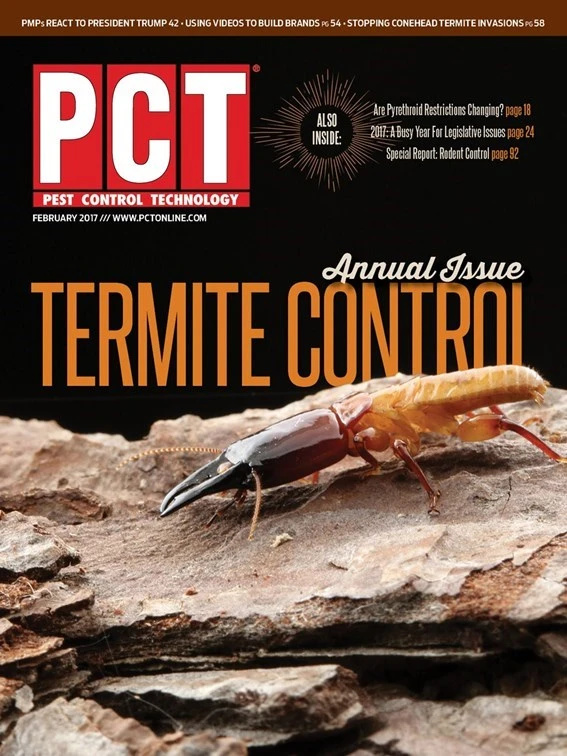
Stephen Gates likes to compare different types of rodents to a football team: the Norway rat, for example, is the stout, chubby linebacker while the roof rat is like the more lean-looking wide receiver.
Gates’ observations come from working with rodents in southern and southeastern regions of the U.S. for Decatur, Ala.-based Cook’s Pest Control. His insights have helped technicians minimize the number of callbacks for rodent control.
Gates shared some of his 18 years of rodent control experience with participants of PCT’s recent Rodent Control Virtual Conference. In particular, he focused on the house mouse, Norway rat and the roof rat. The main challenge for a technician is customer communication. Oftentimes, Gates said technicians are left in the dark regarding past problems or household activity.
Gates said there are several key questions PMPs should ask when starting a rodent program at an account. “Are they trap shy or are they bait shy? What kind of program has been put in place before you got there…if any has actually been put in place?” Gates said. “It’s like if we go to war and we don’t know who we’re supposed to be shooting at, or what we’re supposed to be taking care of or protecting, then it’s all for nothing.”
Gates created a guide of 10 tools on rodent behavior for technicians to share with customers and fellow colleagues:
1. Droppings.
Take them back to the office and have pictures or samples you can compare to others. Droppings can look different by each species and also can be affected by the rat’s age, size of infestation and the activity area. Place traps or bait in areas where droppings are found. Consider removing droppings to determine what rodents are in the area and their recent activity, Gates added.
2. Tracks.
Many technicians overlook tracks when it comes to understanding what rodents are in the area, Gates said. Pay attention to dusty areas and crawlspaces. Place non-toxic dust to determine activity, species and locations of hideaways.
Quick classification: Rats and mice have four toes on front feet and five toes on back feet. Rat tracks are ¾ to 1½ inches and larger than mouse tracks. Rodents may leave tail drag marks between tracks.
3. Gnawing damage.
Look for gnawed debris, such as wood shavings, shredded paper, holes in containers, holes under counters and holes around pipes.
Rats usually can make a 2-inch diameter hole that is rough-edged. Mice make cleanly cut holes that are smaller.
4. Burrows.
Burrows are an obvious sign of Norway rats. The holes can be 3 inches in diameter. An active burrow is free of vegetation and will have fresh soil around the entrance. Check near walls, foundations, under shrubs, dog pens, railroad ties and bird feeders. Note other burrowing animals such as chipmunks, mice and voles.
5. Urine stains.
Urine can be detected by black light. It can leave stains on drop ceiling panels and has a distinct smell.
6. Odors.
Rodents, in general, have a distinct smell. Gates said if a technician is unsure of what he or she is smelling, go to a pet store and take a whiff of caged pets such as hamsters or guinea pigs.
7. Rodent sightings.
If rodents — which are nocturnal species — are seen during the day, it could indicate a large population. A night inspection can help determine the scope of the problem. Stop by the prospective site either after dusk or before dawn.
8. Sounds.
Listen intently for either gnawing sounds or squeaking of young rodents fighting.
9. Runways.
Once rodents find a path that works, they will travel it repeatedly. A trail can sometimes be seen through grass or in a field.
10. Grease marks.
One of the clues that often gets overlooked are grease marks. They show how often a hole or path is used by rodents. Grease marks are indicated by dirt and debris stains around and near entry ways. Walls are significantly darker near holes or pathways that rodents travel.
The author is an editorial intern for PCT.

Explore the February 2017 Issue
Check out more from this issue and find your next story to read.
Latest from Pest Control Technology
- Donny Oswalt Shares What Makes Termites a 'Tricky' Pest
- Study Finds Fecal Tests Can Reveal Active Termite Infestations
- Peachtree Pest Control Partners with Local Nonprofits to Fight Food Insecurity
- Allergy Technologies, PHA Expand ATAHC Complete Program to Protect 8,500 Homes
- Housecall Pro Hosts '25 Winter Summit Featuring Mike Rowe
- Advanced Education
- Spotted Lanternflies, BMSBs Most Problematic Invasive Pests, Poll Finds
- Ecolab Acquires Guardian Pest Solutions





